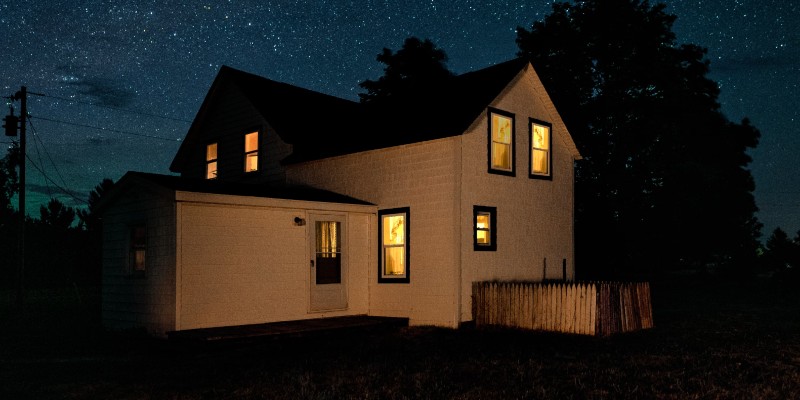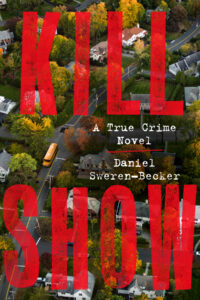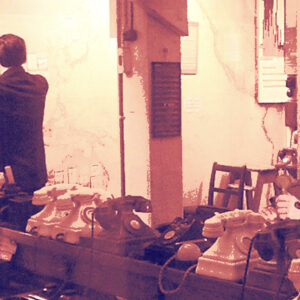The scene couldn’t have been written any better. It was the middle of the night and a father bolted upright in bed, hearing noise downstairs in the kitchen of his suburban home. His wife and children slept peacefully, but the man suspected an intruder had entered the house.
And not just any intruder, he feared, but a cold-blooded, desperate killer. He had fair reason to assume as much, considering what he knew to be true: a convicted murderer had escaped from a prison nearby…the escapee was known to be in the area, prowling around, trying to sustain his bid for freedom by breaking into houses…and by the sounds coming from downstairs, this homeowner sensed that the prisoner was in his kitchen.
He went to the top of the stairs to listen closely. He saw a side door cracked open, curtains fluttering. A weapon, he thought to himself. With a confrontation seeming imminent, he needed a weapon. But the only thing within reach was a framed picture of his family. He took it off the wall, ready to fight for his life. (Symbolism, anyone!?)
But before the pitched battle, an idea: he flicked a light switch on and off, alerting whoever was downstairs. They responded in kind. And then nothing, just a terrifying moment of tension, finally relieved when the intruder downstairs walked out the side door with a handful of food. End of scene. You can breathe again.
For those of you who weren’t following the news in the last few weeks, the events I describe here actually happened. It was a middle chapter in the extraordinary story of the prison break and subsequent manhunt of Danilo Cavalcante, who escaped from Chester County Prison in Pennsylvania and avoided capture for fourteen days before finally being apprehended.
Forgive me, and many others, for reading about this episode in the news and being immediately captivated by it. But I am embarrassed to admit that my reaction was not shock or sympathy or concern, but rather something closer to delight: what a moment!
Compelling characters, high stakes, complex backstories, tension, mood, setting, resolution. It’s a perfect story.
This, unfortunately, is what happens to a brain addicted to true crime.
It is a disconnect that I fear has happened to too many of us: our obsession with true crime stories has numbed us to real tragedies. And it’s a theme I try to explore, with the requisite twists and thrills, in my novel Kill Show, which the depicts the tragic consequences of a reality TV series gone wrong.
The recent Pennsylvania manhunt is merely an example of something I see all the time now: a grisly event will hit our newsfeeds, and before any of us consider the real people impacted by this tragedy, we are already clamoring for and imagining the true crime adaptation. Book, movie, documentary, podcast, it doesn’t make a difference…we are all processing these events as if they are entertainment.
What actor is going to play the bumbling prison warden? Reveal the prisoner’s backstory in Brazil in chapter one or save for later? Who owns the rights to this story?!
I see questions like these pop up all the time during real life tragedies. Not events from the past, mind you, but ongoing stories with the outcomes still undetermined. I am guilty of it too, so I don’t come to judge, only to offer a wakeup call. Perhaps we don’t need to cast victim number three while she is in the middle of emergency surgery.
Our collective obsession with living inside these true crime tales has changed us. I believe it has desensitized us to the violence and danger that exist in our very real worlds. If we are falling asleep every night to a serial killer hunting new victims, the more mundane tragedies in our communities have less power to shock.
Is there a cost to this? Maybe not in a measurable sense. I’m not suggesting that without our true crime books we’d all become benevolent vigilantes saving the world. But speaking for myself, I do think there is an emotional cost. The more I am entertained by recaps of past tragedies, the more jaded I become to present ones.
So will I stop reading the books, watching the series, and swear off true crime? No. I’m not that strong, it’s all too entertaining! But I would, if possible, like to recalibrate my relationship to this content.
Here’s my pie in the sky solution. You know at the end of a movie, that fine print in the credits that says “no animals were harmed during the making of this production”? Well maybe we need the opposite of that on the cover of every true crime book.
“Real people were harmed for this book to exist.”
Readers might just pause and think about that for a second before they dive in and enjoy. I know that I could use the reminder.
***


















